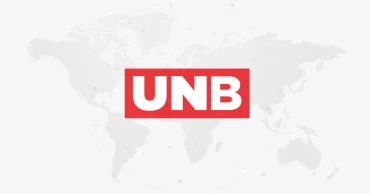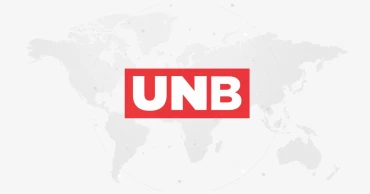Bangladesh’s forex reserves
IMF relaxes forex reserve and revenue targets for $4.70 billion loan
The International Monetary Fund (IMF) has relaxed several targets including foreign exchange reserves, revenue collection, automatic price adjustment of fuel for the $4.70 billion loan package for Bangladesh.
At the beginning of this year, the IMF had set forex reserves target at $25.34 billion by September and $26.81 billion by June next year as conditions for the loan package.
According to BPM6 – reserve calculation method – Bangladesh’s forex reserves stand at $21.15 billion.
Bangladesh urged IMF to downsize required reserves to $20 billion for next loan instalment, says official
On a net basis, this amount has further decreased to below $18 billion.
In this situation, the Finance Division officials requested the IMF to relax the target for forex reserves.
Considering the request, the IMF has relaxed the target. Bangladesh has committed to keep the reserves at $18.4 billion at the end of December this year, and at $20 billion at the end of June next year.
IMF delegation meets BGMEA President to discuss challenges and prospects of RMG sector
Last Tuesday and Wednesday, the visiting IMF delegation discussed the issues with the relevant officials of the Finance Division of the Ministry of Finance.
Sources in the Finance Division said that after discussion, IMF agreed on being flexible on some conditions. Finance Secretary Md. Khairuzzaman Majumder led the meeting on behalf of the government. The IMF mission was led by Rahul Anand, head of the IMF’s Asia-Pacific division.
IMF team holds meeting with Power Division, discusses subsidy
2 years ago
Why Bangladesh’s forex reserves dipped to $21.15 billion? Economists cite reasons
Macroeconomists and policy analysts have listed paying deferred dues, the tendency of FDI profits taken abroad by investors, declining inward remittance flow, capital flight, and money laundering as reasons behind Bangladesh's foreign exchange reserves slipping to US$ 21.15 billion.
Bangladesh’s foreign exchange reserves stood at $21.15 billion on Tuesday in line with the IMF reserve calculation method, Bangladesh Bank shared the information on Wednesday.
According to the central bank, a week ago on September 21, the reserve was $21.45 billion. The forex reserves dipped by $300 million to $21.15 billion within a few days.
Dr Debapriya Bhattacharya, a macroeconomist and public policy analyst, told UNB that this happened due to deferred payments of fuel import and FDI profits of the western investors being taken abroad.
He said Bangladesh’s imports, particularly fuel, in some cases may close unless deferred dues are cleared. Foreign investors are also under pressure to take their profits abroad considering political uncertainty.
Economist Dr Ahsan H Mansur told UNB that the declining inward remittance flow and rise in money laundering are contributing to depleting reserves.
India's foreign exchange reserves dip to 4-month low
He said the situation would not improve before the next national election as there is uncertainty. If a stable government is formed through a credible election, then the economy will recover fast due to improved confidence level, he pointed out.
According to the central bank, the gross reserves (which include EDF funds and loans from reserves) of the country at the beginning of September were $29.23 billion.
JS passes bill doubling security deposit for women’s reserved seats’ candidates
At the beginning of Wednesday (September 27), it decreased to $27.06 billion.
Currently, the average monthly import expenditure is $6 billion. According to this, $18 billion will be required to meet three months of import demand. That is, with the current reserves, the import expenses of little over three months can be met under the Bangladesh Bank policy of a controlled spending system. A further reduction in imports will cover four months of import expenses.
Bill incorporating changes to reserved women's seat elections placed in JS
According to sources, the inflow of dollars in the market has decreased due to a decrease in export earnings and remittance flow. Meanwhile, new LC has to be opened and the debt of the previous LC has to be paid. Apart from this, foreign loans and other debts also have to be paid.
The Asian Clearing Union (ACU) dues for the months of September and October have to be paid in early November. Then the reserves could fall further.
The second installment of the IMF loan could be waived by $480 million in November.
In addition, some loans from the World Bank and Asian Development Bank may also be exempted at that time. Then the foreign exchange reserve may increase slightly. By the end of the year, Bangladesh’s export earnings are expected to increase.
2 years ago
Forex reserves below $38 billion despite tightened imports
Bangladesh’s forex reserves remain under stress despite curbing imports.
This is happening due to the selling pressure of US dollars for import LCs, surge in individual demands to meet travel, medical treatment expenses, and tuition fees for Bangladeshi students at foreign universities.
Bangladesh’s forex reserves for July-August will stand at US$38 billion after payment of $1.75 billion import bills due, — of the Asian Clearing Union (ACU) — said an official of Bangladesh Bank.
The central bank will pay this debt by tomorrow. Then the forex reserves will be below $38 billion, to around $37.50 billion, he said.
Also read: Hope amidst forex crisis: Bangladesh received $2.03bn remittance in Aug
Last Thursday (Sep1,2022), the forex reserves of Bangladesh were $39.05 billion.
Bangladesh Bank has been selling dollars from the reserves to bring 'stability' to the forex market. On Thursday, $76 million dollars were sold to some banks.
In total, the central bank has sold $2.57 billion from reserves in two months.
Former Bangladesh Bank governor Atiur Rahman said that despite the increase in remittance, the forex reserves fell due to the continued sale of dollars.
Also read: BB sets cost ceiling for short-term trade finance in forex
"There is no problem even if the reserves fall to $38 billion in the current global context. Because, with this reserve, it is possible to meet the import expenses of more than six months,” he added.
“Imports are falling; remittance and export earnings are increasing. In this situation, it seems that the forex reserves will increase in the coming days,” he hoped.
The central bank sold $7.67 billion from reserves in FY 2021-22 to stabilize the forex market. Bangladesh never sold such a high amount of dollars from the reserve in a single fiscal year earlier.
However, in the previous financial year (2020-21), Bangladesh Bank bought a record $8 billion to keep the forex market stable during the falling trend of imports for the Covid-19 pandemic.
Read Fuel, forex reserves may run out after power crisis: Fakhrul
3 years ago
Bangladesh’s forex reserves cross $44 bn thanks to better inflow
Bangladesh’s forex reserves rose to USD $ 44.30 billion again after a month, thanks to growing inward remittance.
The forex reserve fell to $43.89 billion on March 6, 2022 after paying import bills of $2.16 billion to Asian Clearing Union (ACU). It was the lowest forex reserves for Bangladesh in past one year.
The remittance inflows of $15.30 billion in nine months of the current (July-March) fiscal year (FY), pushed the foreign currency reserves to 44.30 billion on Sunday in contrast to a month ago.
Bangladesh Bank (BB) sources said with the reserves, it will be possible to meet the import costs over five months. But even six months ago, Bangladesh Bank had reserves to meet the import cost of 10 months.
Also read: Bangladesh’s forex reserve expected to thrive on increased remittance inflow
However, the inflow of remittance is still in negative growth in the first nine months (July-March) of the current 2021-22 fiscal year. In these nine months, the expatriates have sent $15.30 billion remittance. During the same period of the last fiscal year 2020-21, the expatriates sent $ 18.59 billion remittance.
It shows that the inflow of inward remittance has decreased by 18 per cent in 9 months despite remittance inflow increase by 24.45 per cent in March compared to February.
Md. Serajul Islam, executive director and spokesperson of BB told UNB that remittance inflow in the banking channel is increasing gradually after raising the cash incentive to 2.5 per cent.
The expatriates are taking Tk 102.5 by sending Tk 100 remittance in the hassles-free legal channel, he said.
Serajul hinted that the remittance inflow would increase in April for Ramadhan and Eid as the expatriates usually send more money to their relatives in the country during the festival.
The inward remittance inflow of the last nine months of FY22 saw a decreasing trend compared with the similar months in the FY21.
Also read: No decision yet to lend private sector from forex reserves: Finance Minister
Bangladesh received remittance $1.87 million in July, $1810.10 million in August, $1726.71 million in September, $1646.87 million in October and $1553.70 million in November, $1630.66 million in December, $1704.53 million in January, $1149.08 million in February and $1859.97 million in March of FY22.
In the same period of FY21, the remittance inflow was $2598.21million in July, $ 1963.94 million in August, $ 2151.05 million in September, $ 2102.16 million in October, $2078.74 million in November, $2050.65 million in December, $ 1961.91 million in January, $1780.59 million in February and $1910.98 million in March.
3 years ago


.jpg)


